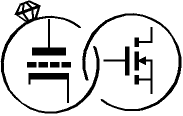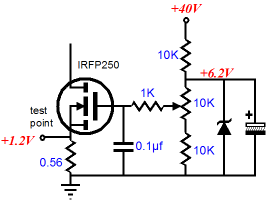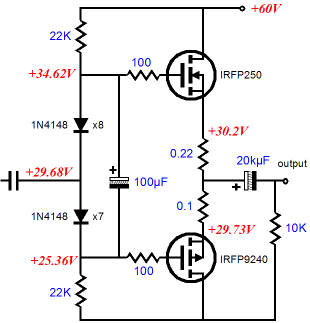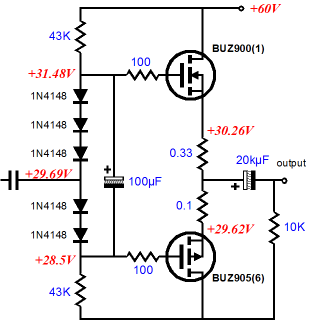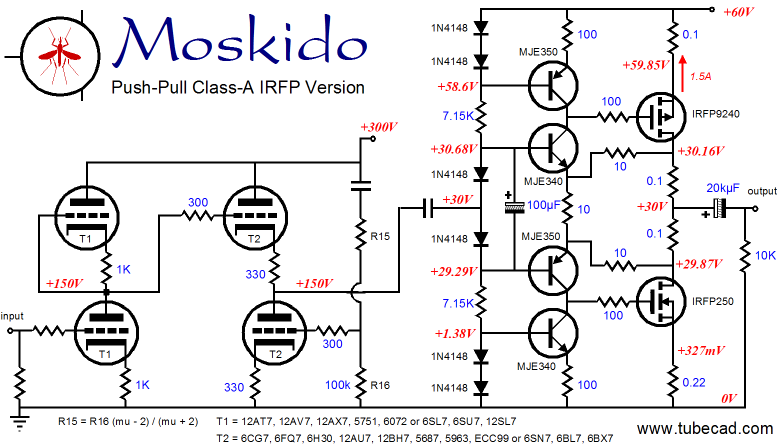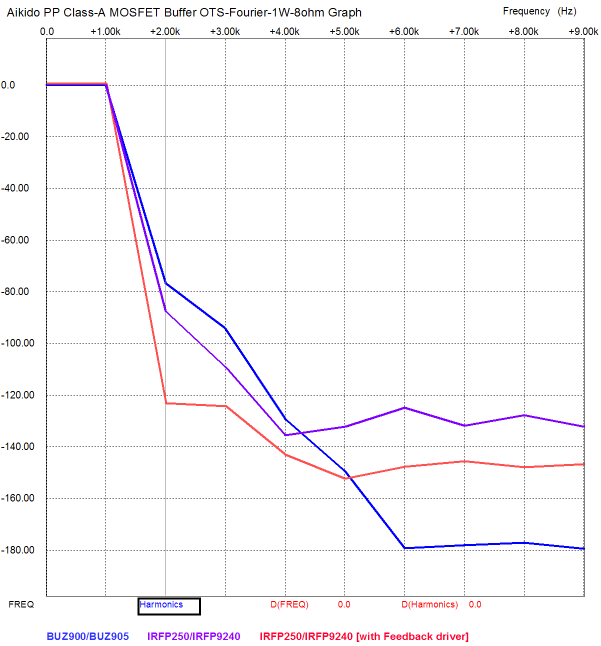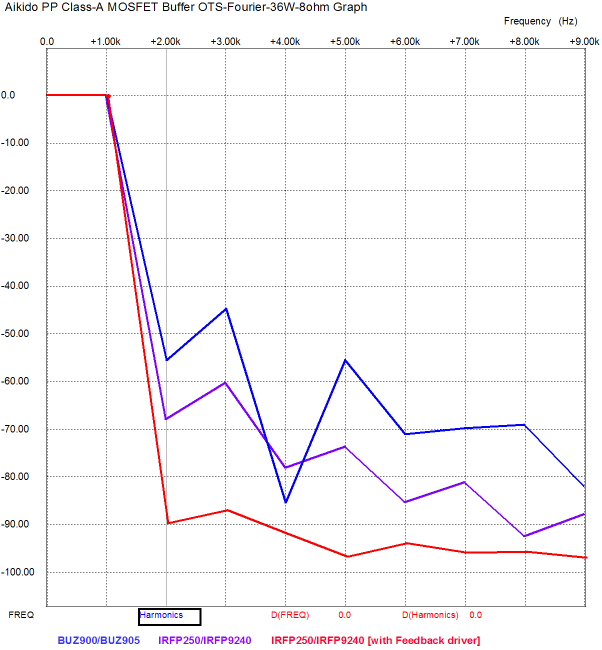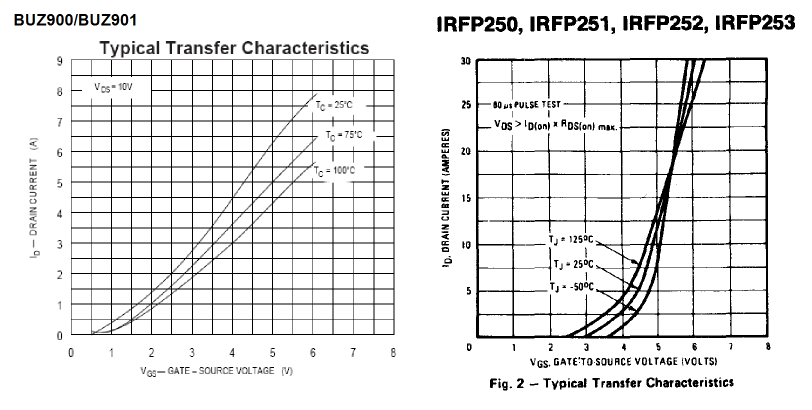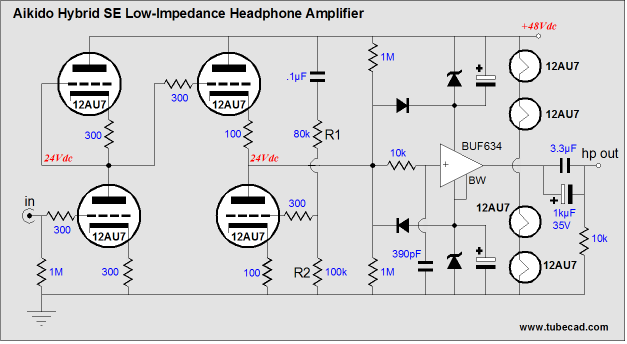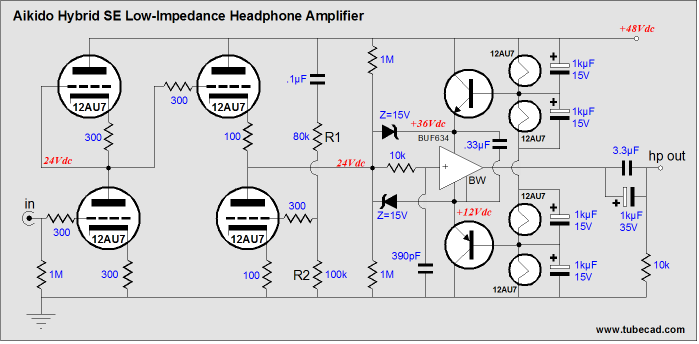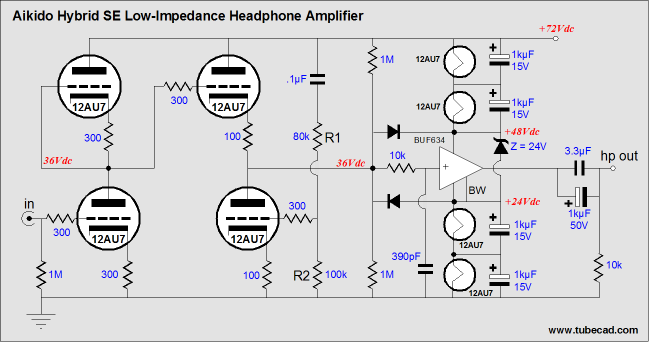| John Broskie's Guide to Tube Circuit Analysis & Design |
21 June 2007
Unless you are a poet, the urge to quote oneself cannot be a good thing—yet I cannot help myself.
The Moskido amplifier is creating a stir in Tube Land, a petite commotion in absolute terms, but relative to the tiny size of Tube Land, it’s a fairly big stirring. Well, at least that is what my e-mail is telling me. Considering that no topic is more beaten-to-death than tube-solid-state hybrid amplifiers—doesn’t seem as if every issue of every DIY audio magazine drags along some new hybrid amplifier design? I can remember seeing at least twenty designs and always it’s the same SRPP or grounded-cathode amplifier driving some MOSFETs. There have been some notable exceptions, but most have a dreary sameness to them. In fact, shouldn’t we have a new acronym, DGNNAHA, for Dear God No, Not Another Hybrid Amplifier? Thus, the Moskido awaking of any interest in a hybrid amplifier is a notable accomplishment. Why should the Moskido hybrid amplifier escape the weary indifference that weighs upon this topic like a dank basement filled with old, soggy newspapers? Yes, the “Moskido” name is cool and Bob Prangnell’s enthusiasm is contagious in his www.DiyAudio.com posts, but something more must explain this recent flush of fascination. No doubt, a small part of the answer is found in the Aikido PCBs, as a PCB is a godsend in terms of actually building a working tube project, as the PCB is more like a paint-by-number picture than the blank canvas offered by a point-to-point wiring project. Second, I think that tube fanciers just hate negative power supplies, if for no other reason than that negative power supplies are hard to create using tube rectifiers. Not that the solid-state portion of the hybrid is going to use tube rectifiers, but the resentment lingers nonetheless, which the two single-polarity power supplies sidestep nicely. (I have to say, though, that an array of eight 5AR4s would be marvelous to behold. Imagine the tube rectifiers in two banks of four in line, at a 60-degree angle, forming a V, and the front panel adorned with a chrome V8 emblem from a 60’s muscle car.) But most of the answer can be found in the Moskido probably sounding better than other hybrid amplifiers, with its Aikido front end delivering a clean, quiet, low-output impedance drive signal to the Magnatec power MOSFETs. A happy marriage indeed.
A common problem that many TCJers are encountering seems to be that the Magnatec MOSFETs, the BUZ900P and BUZ905P, are both expensive and hard to find in the USA, whereas the International Rectifier IRF-type MOSFETs, the IRFP9240 and IRFP250, are cheap and easy to find. The downside to the IR MOSFETs, however, is that they are not nearly as linear (clear sounding) as the Magnatec devices and that they require much greater biasing voltages. Well, that is what I thought up to just a few days ago; now, I am only convinced of the latter half.* Why the change of mind? I ran some SPICE simulations to harvest some graph plots of the harmonics generated by these two types of MOSFETs and I was amazed to see the IRFP9240 and IRFP250 do so well. More details will follow. In other words, the IR MOSFETs are not drop-in replacements. Thus, a few changes should be made to the original circuits. For example, the single ended Moskido amplifier should hold an adjustable bias voltage for setting the idle current when using IRFP250.
The above circuit allows a range between 4V to 6.2V, which should accommodate just about any 250-type MOSFET in reaching a 2A idle current. The push-pull Moskido amplifier, on the other hand, requires quite a few more diodes to establish the greater bias voltage.
The following schematic shows a substantial rework of the MOSFET output stage for the IR MOSFETs. Before running the SPICE simulations, I was sure that the IR MOSFETs would need a helping hand to compete with the Magnatec MOSFETs, so I devised the following circuit to iron out the IR MOSFETs. (The source resistors differ between N-channel and P-channel devices, because the transconductances do match between devices.)
The MOSFETs are no longer directly driven by the Aikido front end; instead, they receive their drive signal from a complementary transistor driver stage that also applies a local feedback loop across the output MOSFET. Why add an additional stage? The feedback greatly reduces the IR MOSFET’s nonlinearity. If you are starting to feel woozy, don’t. This feedback holds a clever trick. The driver transistors are loaded by constant-current sources, which do see a constant reference voltage. In this arrangement, the constant-current source loses it reference voltage as it is driven near its rail voltage. In other words, if a normal, textbook-sanctioned constant-current source or a simple resistor were used, the distortion would be higher; but this constant-current source isn’t normal: it embodies an Aikido-like distortion canceling mechanism. The result is that this output stage produces much less distortion than the simpler Magnatec or IR MOSFET versions, but at a price. The simple versions clip with a near-tube smoothness; the IR-MOSFET feedback-laden output stage clips much harder. So which is better? I am not sure, but I would probably opt for the simple circuit with IR MOSFETs...but I wouldn’t kick the IR-MOSFET-feedback amplifier out of my bedroom either. With efficient loudspeakers or with separate bass amplifiers, the hard clipping may never manifest it self, besides its distortion is much lower at 36W of output. Below are the three output stage topologies simulation results, with the output stages (no Aikido stage) delivering 1W into an 8-ohm load.
Note how IR MOSFETs win the THD race, but how the BUZ900/BUZ905 version offers lower 5th, 6th, 7th, 8th, and 9th harmonics. And then same test, but with 36W of output into an 8-ohm load.
Well, it is hard not to be impressed with the IR MOSFETs in the feedback version. An additional consideration is that of thermal safety. Look at the graphs below and look at the purely negative shift in current with increased temperature with the Magnatec devices, versus the positive shift in current with increased temperature with IR device until 18A is reached.
One possibility is that the IR MOSFETs are actually not as good as the SPICE models imply, but I doubt it. Unlike tubes, MOSFETs are rendered quite nicely by SPICE. In fact, when the SPICE engine was being developed by the Electronics Research Laboratory of the University of California at Berkeley, a good amount of effort was spent on the MOSFET math model. (By the way, "SPICE," which stands for "Simulation Program with Integrated Circuits Emphasis," used to be named "CANCER," which was an acronym for "Computer Analysis of Nonlinear Circuits, Excluding Radiation." Did you catch that 60s era snub? Ah those were the days...) The best path to follow is actually building two MOSKIDO amplifiers with the competing MOSFETs and holding a shootout. Failing that, I can create a virtual curve tracer in SPICE and run a comparison of the SPICE simulations and the plots in the graph above.
Small Moskidos
Back in blog number 59, we find the instructions on how to wire all heaters in series on the Aikido stereo PCBs. If you don’t know the BUF634, you should. It is a fairly good solid-state buffer (and even better in the high-current, wide-bandwidth mode). The only problem is the limited power-supply rail-to-rail voltage allowed for by the BUF634. The workaround is to place two zeners in series with the device or the following two circuit work equally well to shield the low-voltage device.
Of course, if you can find a good supply of 6GM8/6N27P/ECC86s, then a 24V power-supply-rail voltage can be used and the BUF634 will need no protection from high voltage The reason I post these two schematics is to plant the idea of building a scaled up version of this type of hybrid amplifier. For example, what if the 48V rail voltage is retained, but the BUF634 is replaced by an LM12 power amplifier? The 48V B+ could be derived from a small medical-grade switching power supply. The input 12AU7 could be replaced by a 12AX7, which would bring the gain up something close to +34dB. The output 12AU7 could be replaced with a ECC99 or 5687, if the 12AX7 heaters were in parallel with power resisters to equalize the current draw from all the heater elements.
//JRB
*The future may not look good for the IRFP9240 and IRFP250, as IR seems to be dropping more and more power MOSFETs suitable for traditional amplifier output stages, focusing their efforts on low-wattage, low-voltage MOSFETs for Class-D amplifiers. |
|
| www.tubecad.com Copyright © 1999-2007 GlassWare All Rights Reserved |

